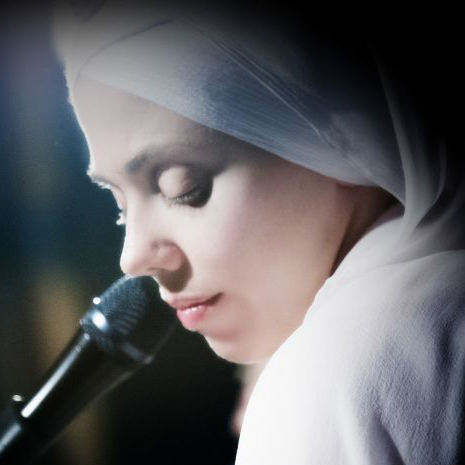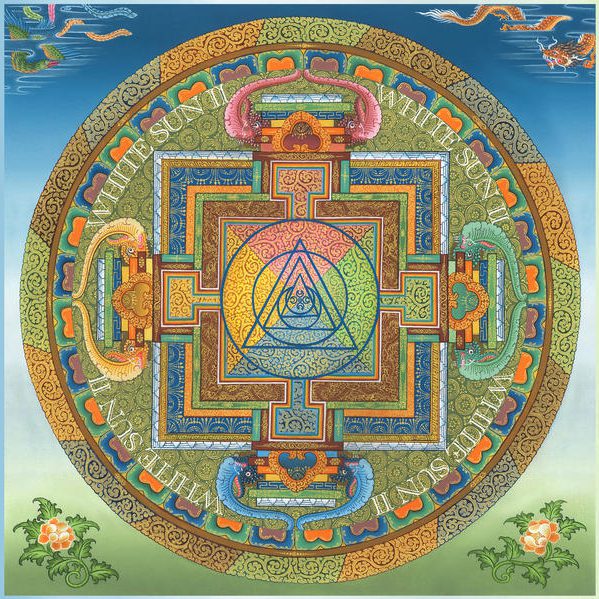White Sun in the Echoes Podcast
Podcast: Play in new window | Download
Subscribe: RSS
 Mantras have been around for millennia and in the west we’ve been hearing them since the Hare Krishnas started populating urban street corners and parks in the 1960s. But ever since George Harrison produced an album by the Radha Krishna Temple in 1969, with the hit song, “Hare Kirshna”, mantras have taken a different form. In the 21st century, artists like Rasa and Donna Delory took Sanskrit chants and turned them into new age tapestries, sometimes sounding more like pop songs than chants. Out of that tradition comes White Sun, a group led by singer and writer Gurujas.
Mantras have been around for millennia and in the west we’ve been hearing them since the Hare Krishnas started populating urban street corners and parks in the 1960s. But ever since George Harrison produced an album by the Radha Krishna Temple in 1969, with the hit song, “Hare Kirshna”, mantras have taken a different form. In the 21st century, artists like Rasa and Donna Delory took Sanskrit chants and turned them into new age tapestries, sometimes sounding more like pop songs than chants. Out of that tradition comes White Sun, a group led by singer and writer Gurujas.
At the Intercontinental Hotel in New Orleans where she’s appearing as a nominee in the Zone Music Reporter Awards, Gurujas is luminous. And it’s not just the pure white embroidered blouse and white turban-like headdress called a chunni with its gold amulet. Gurujas radiates joy through her blue eyes and sensuality through her broad laugh. She is the singer and writer for a trio called White Sun. You may have heard of them before: they won a Grammy award in the New Age category this year for their album, White Sun II. That shocked everybody, including them.
“Somebody posted one of the videos of the acceptance speech, I think,” she laughs. “And somebody that I know posted ‘whoa, this so surreal.’ And it is so surreal.”
Even though their album, White Sun II is more purely new age than many nominees in the genre, it’s still on the outside of conventional, an album of Sanskrit mantra chants. Mantras traditionally sound bare-boned, sung with rough hewn voices. But White Sun’s versions are quite a bit different. Gurujas works with composer Adam Berry and spiritual guide Harijiwan to create arrangements of symphonic folk expanses. “Adam and Harijiwan, really, we work as a team, you know, to create the soundscape,” Gurujas expressed. “And Adam’s a musical genius. I don’t know if you know much about him, but he’s just, he’s been playing his entire life and he’s an absolute musical genius.”
In fact, Adam Berry has won two Emmy Awards and created soundtracks for South Park, the Penguins of Madagascar, and Kim Possible, none of which seem like precursors to White Sun. Her other collaborator is Harijiwan, which is his one and only name. He actually founded the group, although he seems more of a spiritual guide than a musician. He’s just listed as playing gong.
 “Harijiwan has a sensitivity that I’ve certainly never seen in any other human being,” declares Gurujas. “Where he can direct energetically, exactly the flow of the song and what serves, and what doesn’t serve, the energy field of what we’re creating in the music.”
“Harijiwan has a sensitivity that I’ve certainly never seen in any other human being,” declares Gurujas. “Where he can direct energetically, exactly the flow of the song and what serves, and what doesn’t serve, the energy field of what we’re creating in the music.”
Gurujas works out the melodies, usually just backing herself with a harmonium, and then brings them to the band. “I very, very much feel like the songs themselves guide us to create a certain landscape, and with “Gobinday Mukunday”, that was the case,” she says, speaking of one of the songs from White Sun II. “We had the melody and then it just, it wanted to be dramatic. It wanted to be theatrical, and we you know, when we were in the studio creating it we were thinking of sandstorms and big Sahara sandstorms and that was what was conjuring in our minds at the time.”
The 34-year-old singer was born to parents who she says were hippies, but they weren’t hippie enough to name her Gurujas. “Oh, I don’t discuss that,” declares Gurujas, referring to the name given to her by her parents.
“Oh, come on,” I say incredulously.
“Yeah, no, I don’t. My name is legally changed,” she insists.
“Okay, how do your parents feel about that?” I ask.
“You know, it’s kind of hard to argue with my lifestyle, you know,” she responds. “It’s very you know, as clean as I can, you know, calm living, you know, quiet, so. Both my parents meditated when I was a young child, so I think they could understand my leaning in that direction with yoga.”
Gurujas is one word. “‘Jas’ means grace or praise,” she explains. “And ‘Guru’ is a, is a force of self love and it’s a force of bringing darkness to light.”
Although she is pure American, born in Cleveland, she is a member of the Sikh religion. But the source of her mantras as well as her manner of dress comes more from Kundalini yoga. “You won’t go to India and see Sikhs dressed like this,” she avers. “You just won’t.”
It was through yoga that she discovered mantra. She describes it as a technology. “A mantra is a combination of sounds that are designed to have a specific effect on the human body and brain and entire system,” she says with a zealot’s earnestness. “So a mantra is like a computer code, and the tongue types that code into the mouth, onto the roof of the mouth, and stimulates certain meridians and certain energy points in the body, stimulates the hypothalamus, stimulates the pineal gland, stimulates the pituitary gland and the whole body starts to have a chemical reaction. And so in this way, the mantras literally change the way that the brain, the neurons of the brain are firing, and start to direct them in a more positive place. So that’s the technology of it, that’s the science of a mantra.”
Mantras don’t come with melodies. They aren’t like psalms or hymns. So Gurujas makes up her own, something she discovered while practicing Kundalini yoga. “I started practicing this yoga you know, and I started hearing different sounds. I started hearing the mantras in a different way,” she reveals. “I started to hear melodies. And ever since, I just, I hear more and more and more. I think I have like on my iPhone sitting over there, I probably have like 2,000 melodies or something like this, you know, that I just keep in the voice memos.”
Gurujas can even turn Bobby McFerrin’s “Don’t Worry Be Happy” into a mantra.
“Can I call it that? I don’t think so, maybe?” She ponders. “Is it? Yeah, sure, I guess,” she jokes.
There is little doubting the joy that Gurujas brings to her work with White Sun, work that’s a little more challenging since she had her first child over a year ago. But that didn’t stop her from making two albums in that time. Despite her music and attire, she considers herself just another American mom and wife.
“You know, it’s funny because as extreme as I look, and I do look very extreme,” she admits. “I still feel that I lead a pretty conventional life, you know. I think that it actually makes me feel more normal and more human than I ever have.”
That may be true, but her music with White Sun may make you feel better than human. The latest album by the group is White Sun II.
